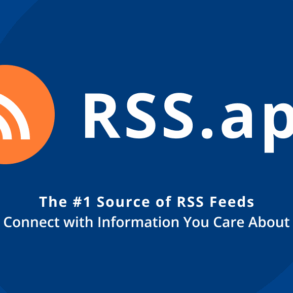
i Maza, M. T., Fox, K. A., Kwon, S. J., Flannery, J. E., Lindquist, K. A., Prinstein, M. J., & Telzer, E. H. (2023). Association of habitual checking behaviors on social media with longitudinal functional brain development. JAMA Pediatrics, 177(2), 160–167; Prinstein, M. J., Nesi, J., & Telzer, E. H. (2020). Commentary: An updated agenda for the study of digital media use and adolescent development—Future directions following Odgers & Jensen (2020). Journal of Child Psychology and Psychiatry, 61(3), 349–352. https://doi.org/10.1111/jcpp.13219
ii Nesi, J., Choukas-Bradley, S., & Prinstein, M. J. (2018). Transformation of adolescent peer relations in the social media context: Part 1—A theoretical framework and application to dyadic peer relationships. Clinical Child and Family Psychology Review, 21(3), 267–294. https://doi.org/10.1007/s10567-018-0261-x
iii Valkenburg, P. M., & Peter, J. (2013). The differential susceptibility to media effects model. Journal of Communication, 63(2), 221–243. https://doi.org/10.1111/jcom.12024
iv Fareri, D. S., Martin, L. N., & Delgado, M. R. (2008). Reward-related processing in the human brain: Developmental considerations. Development and Psychopathology, 20(4), 1191–1211; Somerville, L. H., & Casey, B. J. (2010). Developmental neurobiology of cognitive control and motivational systems. Current Opinion in Neurobiology, 20(2), 236–241. https://doi.org/10.1016/j.conb.2010.01.006
v Shin, D. (2020). How do users interact with algorithm recommender systems? The interaction of users, algorithms, and performance. Computers in Human Behavior, 109, 106344. https://doi.org/10.1016/j.chb.2020.106344
vi Sherman, L. E., Payton, A. A., Hernandez, L. M., Greenfield, P. M., & Dapretto, M. (2016). The power of the Like in adolescence: Effects of peer influence on neural and behavioral responses to social media. Psychological Science, 27(7), 1027–1035. https://doi.org/10.1177/0956797616645673
vii Albert, D., Chein, J., & Steinberg, L. (2013). The teenage brain: Peer influences on adolescent decision making. Current Directions in Psychological Science, 22(2), 114–120. https://doi.org/10.1177/0963721412471347
viii Armstrong-Carter, E., & Telzer, E. H. (2021). Advancing measurement and research on youths’ prosocial behavior in the digital age. Child Development Perspectives, 15(1), 31–36. https://doi.org/10.1111/cdep.12396; Newcomb, A. F., & Bagwell, C. L. (1995). Children’s friendship relations: A meta-analytic review. Psychological Bulletin, 117(2), 306.
ix Nesi, J., & Prinstein, M. J. (2019). In search of likes: Longitudinal associations between adolescents’ digital status seeking and health-risk behaviors. Journal of Clinical Child & Adolescent Psychology, 48(5), 740–748. https://doi.org/10.1080/15374416.2018.1437733; Rotondi, V., Stanca, L., & Tomasuolo, M. (2017). Connecting alone: Smartphone use, quality of social interactions and well-being. Journal of Economic Psychology, 63, 17–26. https://doi.org/10.1016/j.joep.2017.09.001
x Sherman, L. E., Payton, A. A., Hernandez, L. M., Greenfield, P. M., & Dapretto, M. (2016). The power of the Like in adolescence: Effects of peer influence on neural and behavioral responses to social media. Psychological Science, 27(7), 1027–1035. https://doi.org/10.1177/0956797616645673
xi Susi, K., Glover-Ford, F., Stewart, A., Knowles Bevis, R., & Hawton, K. (2023). Research review: Viewing self-harm images on the internet and social media platforms: Systematic review of the impact and associated psychological mechanisms. Journal of Child Psychology and Psychiatry, 64(8), 1115–1139.
xii Hartley, C. A., & Somerville, L. H. (2015). The neuroscience of adolescent decision-making. Current Opinion in Behavioral Sciences, 5, 108–115. https://doi.org/10.1016/j.cobeha.2015.09.004
xiii Atherton, O. E., Lawson, K. M., & Robins, R. W. (2020). The development of effortful control from late childhood to young adulthood. Journal of Personality and Social Psychology, 119(2), 417–456. https://doi.org/10.1037/pspp0000283
xiv Boer, M., Stevens, G. W., Finkenauer, C., & Van den Eijnden, R. J. (2022). The course of problematic social media use in young adolescents: A latent class growth analysis. Child Development, 93(2), e168–e187.
xv Hall, A. C. G., Lineweaver, T. T., Hogan, E. E., & O’Brien, S. W. (2020). On or off task: The negative influence of laptops on neighboring students’ learning depends on how they are used. Computers & Education, 153, 103901. https://doi.org/10.1016/j.compedu.2020.103901; Sana, F., Weston, T., & Cepeda, N. J. (2013). Laptop multitasking hinders classroom learning for both users and nearby peers. Computers & Education, 62, 24–31. https://doi.org/10.1016/j.compedu.2012.10.003
xvi von Bastian, C. C., & Druey, M. D. (2017). Shifting between mental sets: An individual differences approach to commonalities and differences of task switching components. Journal of Experimental Psychology: General, 146(9), 1266–1285. https://doi.org/10.1037/xge0000333
xvii Andrews, J. C., Walker, K. L., & Kees, J. (2020). Children and online privacy protection: Empowerment from cognitive defense strategies. Journal of Public Policy & Marketing, 39(2), 205–219. https://doi.org/10.1177/0743915619883638; Romer D. (2010). Adolescent risk taking, impulsivity, and brain development: Implications for prevention. Developmental Psychobiology, 52(3), 263–276. https://doi.org/10.1002/dev.20442
xviii Orben, A., Przybylski, A. K., Blakemore, S.-J., Kievit, R. A. (2022). Windows of developmental sensitivity to social media. Nature Communications, 13(1649). https://doi.org/10.1038/s41467-022-29296-3
xix Paruthi, S., Brooks, L. J., D’Ambrosio, C., Hall, W. A., Kotagal, S., Lloyd, R. M., Malow, B. A., Maski, K., Nichols, C., Quan, S. F., Rosen, C. L., Troester, M. M., & Wise, M. S. (2016). Recommended amount of sleep for pediatric populations: A consensus statement of the American Academy of Sleep Medicine. Journal of Clinical Sleep Medicine, 12(6), 785–786. https://doi.org/10.5664/jcsm.5866
xx Perrault, A. A., Bayer, L., Peuvrier, M., Afyouni, A., Ghisletta, P., Brockmann, C., Spiridon, M., Hulo Vesely, S., Haller, D. M., Pichon, S., Perrig, S., Schwartz, S., & Sterpenich, V. (2019). Reducing the use of screen electronic devices in the evening is associated with improved sleep and daytime vigilance in adolescents. Sleep, 42(9), zsz125. https://doi.org/10.1093/sleep/zsz125; Telzer, E. H., Goldenberg, D., Fuligni, A. J., Lieberman, M. D., & Gálvan, A. (2015). Sleep variability in adolescence is associated with altered brain development. Developmental Cognitive Neuroscience, 14, 16–22. https://doi.org/10.1016/j.dcn.2015.05.007
xxi Livingstone, S., & Smith, P. K. (2014). Annual research review: Harms experienced by child users of online and mobile technologies: The nature, prevalence and management of sexual and aggressive risks in the digital age. Journal of Child Psychology and Psychiatry, 55(6), 635–654. https://doi.org/10.1111/jcpp.12197; Wolak, J., Finkelhor, D., Mitchell, K. J., & Ybarra, M. L. (2008). Online “predators” and their victims: Myths, realities, and implications for prevention and treatment. American Psychologist, 63(2), 111–128. https://doi.org/10.1037/0003-066X.63.2.111
xxii Wachs, S., Costello, M., Wright, M. F., Flora, K., Daskalou, V., Maziridou, E., Kwon, Y., Na, E.-Y., Sittichai, R., Biswal, R., Singh, R., Almendros, C., Gámez-Guadix, M., Görzig, A., & Hong, J. S. (2021). “DNT LET ’EM H8 U!”: Applying the routine activity framework to understand cyberhate victimization among adolescents across eight countries. Computers & Education, 160, Article 104026. https://doi.org/10.1016/j.compedu.2020.104026; Padilla-Walker, L. M., Stockdale, L. A., & McLean, R. D. (2020). Associations between parental media monitoring, media use, and internalizing symptoms during adolescence. Psychology of Popular Media, 9(4), 481. https://doi.org/10.1037/ppm0000256
xxiii Dietvorst, E., Hiemstra, M., Hillegers, M. H. J., & Keijsers, L. (2018). Adolescent perceptions of parental privacy invasion and adolescent secrecy: An illustration of Simpson’s paradox. Child Development, 89(6), 2081–2090. https://doi.org/10.1111/cdev.13002; Auxier, B. (2020, July 28). Parenting Children in the Age of Screens. Pew Research Center: Internet, Science & Tech; Pew Research Center. https://www.pewresearch.org/internet/2020/07/28/parenting-children-in-the-age-of-screens/
xxiv National Academies of Sciences, Engineering, and Medicine. (2024). Social media and adolescent health. The National Academies Press. https://doi.org/10.17226/27396
xxv Charmaraman, L., Lynch, A. D., Richer, A. M., & Zhai, E. (2022). Examining early adolescent positive and negative social technology behaviors and well-being during the Covid-19 pandemic. Technology, Mind, and Behavior, 3(1), Feb 17 2022. https://doi.org/10.1037/tmb0000062
xxvi Dietvorst, E., Hiemstra, M., Hillegers, M.H.J., & Keijsers, L. (2018). Adolescent perceptions of parental privacy invasion and adolescent secrecy: An illustration of Simpson’s paradox. Child Development, 89(6), 2081–2090. https://doi.org/10.1111/cdev.13002
xxvii Charmaraman, L., Lynch, A. D., Richer, A. M., & Zhai, E. (2022). Examining early adolescent positive and negative social technology behaviors and well-being during the Covid-19 pandemic. Technology, Mind, and Behavior, 3(1), Feb 17 2022. https://doi.org/10.1037/tmb0000062
This post was originally published on this site be sure to check out more of their content







